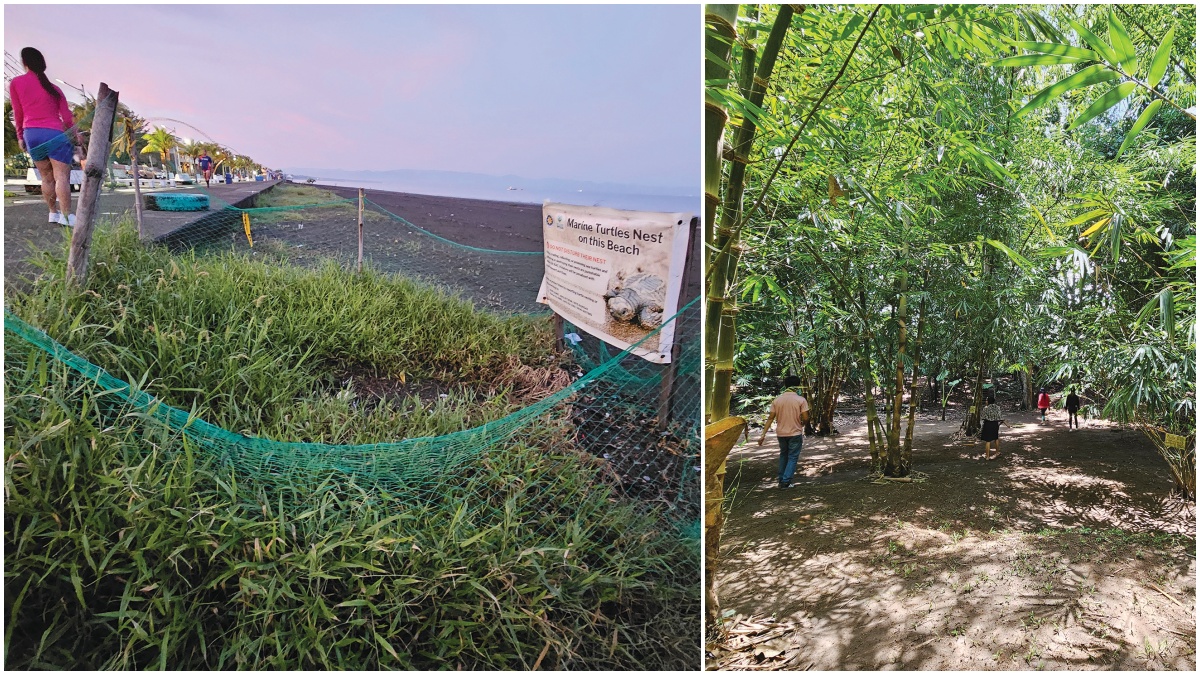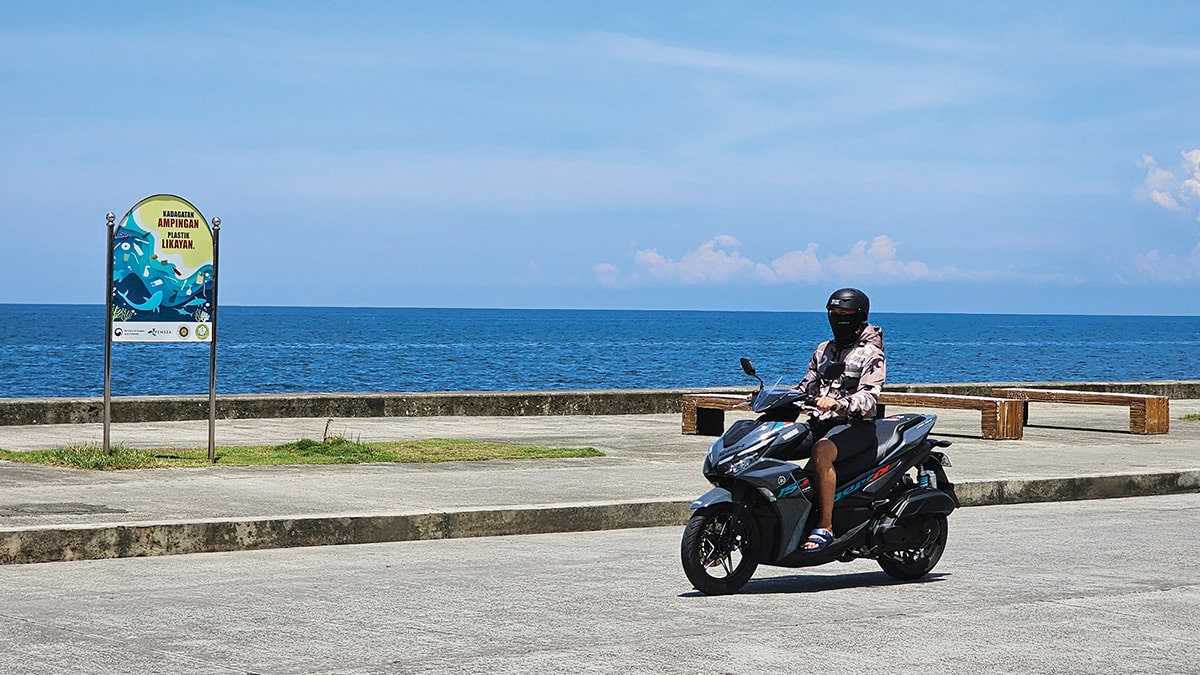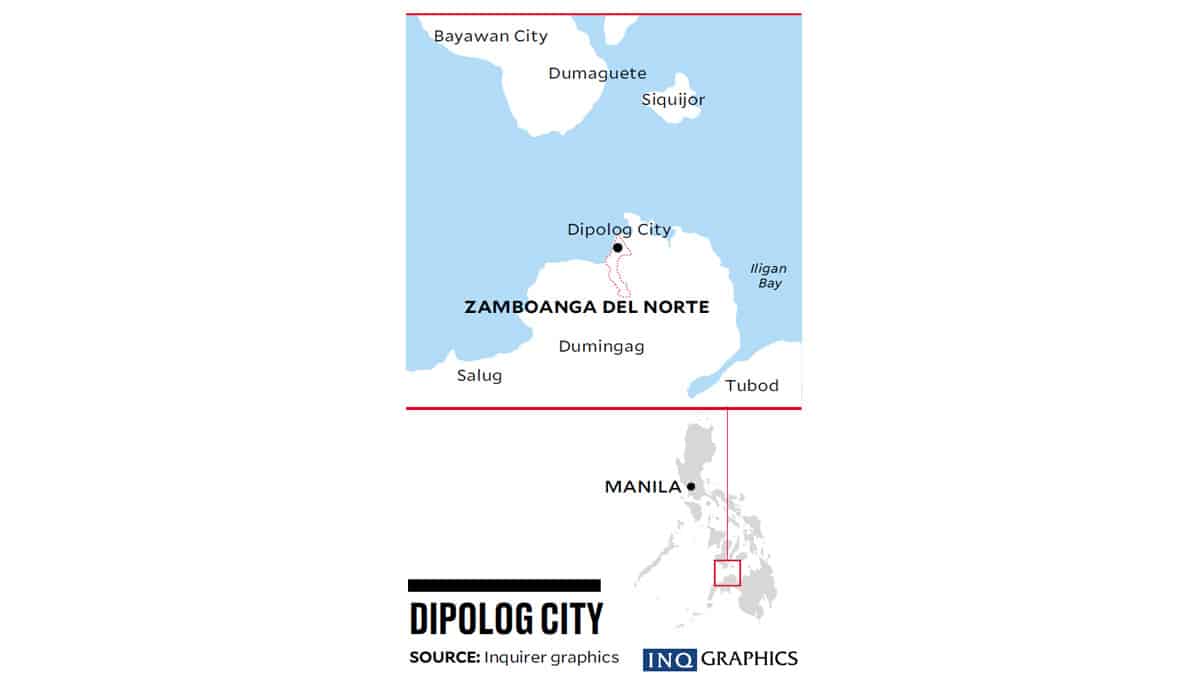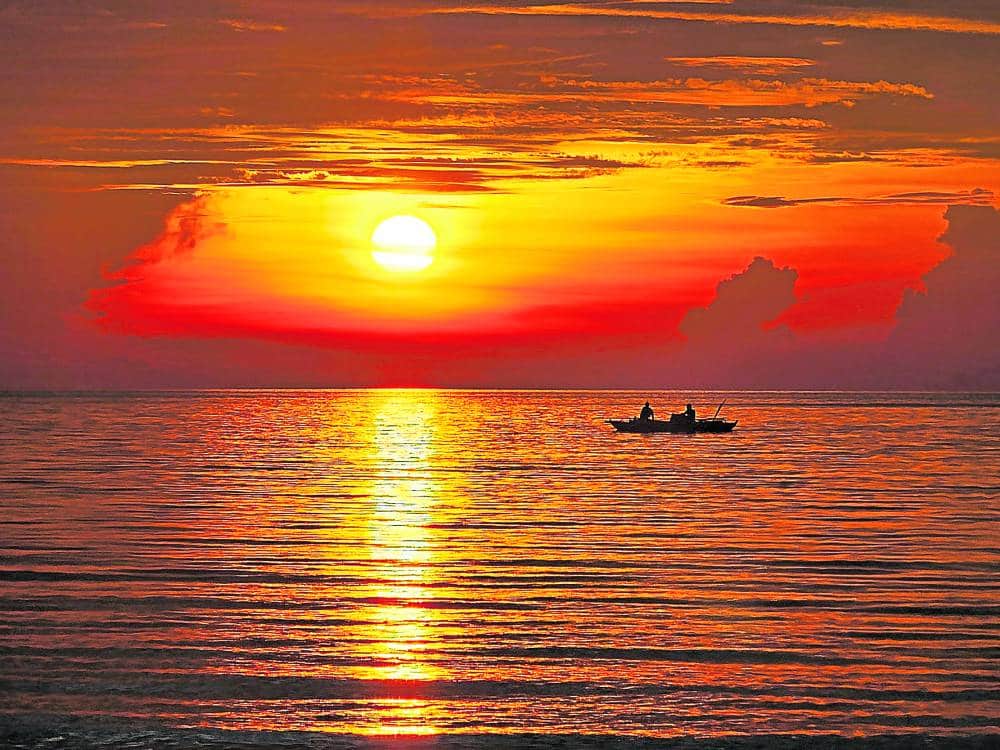
NATURE IS KING A pair of fishers (high photograph) stake out for a catch in a portion of Dipolog Bay the place bulk fishing is allowed. Above left, a turtle nesting web site alongside town’s shoreline is marked to keep away from it from being disturbed by human exercise. The native authorities can be taking good care of a bamboo forest because it embarks on a reforestation venture, particularly alongside its riverbanks. —PHOTOS BY RYAN D. ROSAURO
DIPOLOG CITY—Even amid a drizzle, scores of individuals younger and outdated, with rods in tow, take their respective locations at a breakwater and in moored boats to solid a line as faculties of fish swarm about within the present because the waters of Dipolog River empty into Dipolog Bay.
The “bukana” or river mouth right here is the primary alternative for line fishers to stake out for catch.
“This space is wealthy with fish,” Reggie, a line fisher, defined in Bisaya, pointing to the patches of mangroves alongside the river and on the foreshore of Barangay Barra, a fishing group.
He recalled that a number of days again, a line fisher caught an 8-kilogram fish there, most likely grazing on smaller ones and on the considerable sea grasses.
For the reason that apply of blast fishing was eradicated a number of years in the past, the marine riches of the bukana and the bay had returned, the road fishers advised the Inquirer.
Article continues after this commercial
“There’s strict enforcement of fishery legal guidelines right here, however that’s for everyone’s good as a result of we’re in a position to take pleasure in [its effects]. Should you use nets, it is best to enterprise some 100 meters from the shore,” stated Reggie, including that he knew about these guidelines by way of the general public training campaigns of the native authorities.
Article continues after this commercial
“It’s heartening to listen to that our previous efforts had borne fruit and are taking root, particularly amongst those that are direct stakeholders of environmental conservation,” stated lawyer Gratian Paul Tidor, appearing head of the Metropolis Surroundings and Pure Assets Workplace (Cenro).
Environmental conservation and safety has been excessive on the native authorities’s agenda within the final twenty years, alongside its “Swigapore objective” that seeks to remodel town right into a sustainable and self-reliant city group the place individuals had easy accessibility to social providers, following within the footsteps of Switzerland and Singapore.
In line with Ernie Rojo, native financial and funding promotions officer, town pioneered the concept of a fishing ban on herring or “tamban” which works into the manufacturing of the well-known Dipolog connoisseur sardines.
The ban, from December to February, ensured that the fish inhabitants is ready to regenerate therefore sustaining the catch ranges and in addition town’s sardines business, Rojo defined.
The 1734 Murillo Velarde map of the nation underneath Spanish possession indicated a settlement named “Diporog,” which attests to the lengthy historical past of the locality.
Based in 1834, Dipolog was reverted right into a barrio of Dapitan in 1904 and reestablished as a municipality in 1913. It grew to become a metropolis in 1970. It has been the capital of Zamboanga del Norte province since its creation in 1952.
Transformation
Though its laidback character remains to be there, the altering financial and technological panorama is reworking Dipolog
At current, the third class metropolis (common annual revenue of P240 million however lower than P320 million) hosts 138,141 individuals in its 13,800-hectare land space, per the census of 2020, however its daytime inhabitants is estimated to swell to 200,000 with throngs of scholars attending lessons within the metropolis’s faculties.
This inflow of younger individuals in a given day has pushed the surge of pop-up espresso outlets, particularly within the metropolis’s college belt, elevating new challenges in waste administration, stated Tidor.
“Most of those kids desire iced espresso, which requires plastic cups, versus paper cups for warm espresso,” he famous.
To handle this, the Cenro is exploring potential incentives to those shops for “plastic cups avoidance” measures comparable to lowering promoting value for individuals who carry their tumblers. “All these are at present within the drafting board,” Tidor stated.
In a given day, Dipolog generates as much as 25 tons of waste. Of those, 60 % are biodegradable, and as much as 2 tons are plastics. With 80 % of the collected waste correctly segregated, additional sorting of those on the metropolis’s supplies restoration facility turns into extra environment friendly.
To keep away from dumping the residual plastics into its landfill, the native authorities ships these to the manufacturing facility of Holcim Cement in Lugait, Misamis Oriental, to feed to its waste-to-energy plant.
Tidor credit the already minimal plastic waste generated by town to the discount of its use in business institutions, primarily because of the single-use plastics ban.

AVOIDING PLASTICS A motorist passes by a signage discouraging the usage of plastics in Dipolog Metropolis with the intention to assist save the atmosphere.
To additional add to the strain in opposition to plastics, Cenro imposed upon itself the ban on the usage of styrofoam meals packs throughout its actions with Tidor hopeful this may grow to be a coverage for the remainder of native authorities places of work.
At present, the native authorities hopes to construct on this observe file for the bigger objective of serving to deal with the additional warming up of the planet.
Shift to solar energy
Tidor stated Mayor Darel Uy had pushed them to innovate to cut back the native authorities’s carbon footprint given its 250,000 kilowatt-hour month-to-month vitality wants and assist sequester carbon within the ambiance.
This was the inspiration for town’s shift to solar-powered streetlights, a method that additionally gained traction among the many barangay governments. Within the pipeline is the shift to renewable energy for Metropolis Corridor and the native government-owned Corazon C. Aquino Hospital.
Uy has ensured that deliberate amenities just like the slaughterhouse and public market are designed to be operated by way of the usage of pure air flow and lighting.
For carbon sequestration, the native authorities has launched into huge bamboo planting, particularly alongside riverbanks and in a 2-ha upland space.
Tidor stated bamboo can sequester two tons of carbon a 12 months and matures inside 4 to 5 years, which means, it grows 80 % quicker than the common hardwood species.
The native authorities has partnered with the water district to develop a bamboo forest in one among its spring sources. As of 2022, the native authorities had planted greater than 78,000 bamboo alongside the riverbanks and creeks, serving to additionally stop erosion and flooding.
Yearly, the native authorities mobilizes youth volunteers to plant some 5,000 native bushes inside its 356-ha ecopark in Barangay Cogon, additional boosting the carbon sequestration capability of its pure forest that spans about 40 % of the realm. INQ



